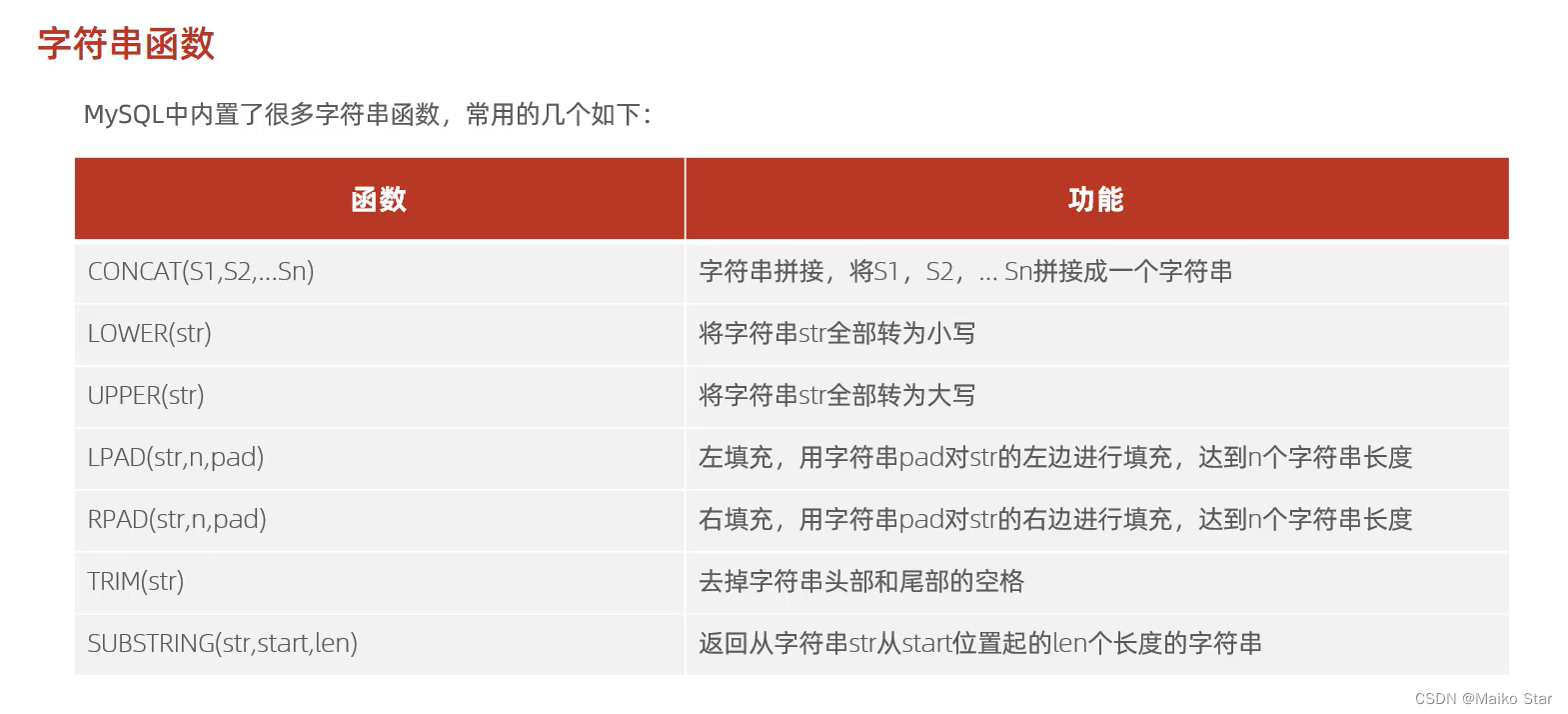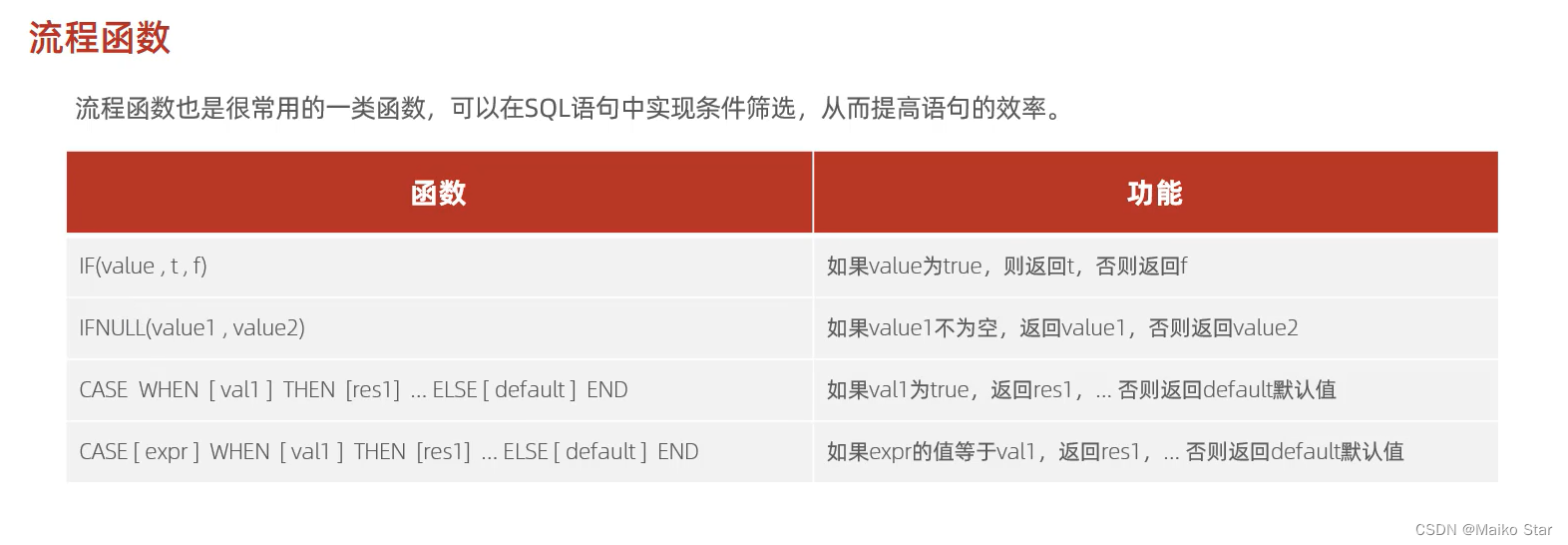1. String functions

Commonly used functions:
| function | Function |
|---|---|
| CONCAT(s1, s2, …, sn) | String concatenation, concatenate s1, s2, …, sn into a string |
| LOWER(str) | Convert all strings to lowercase |
| UPPER(str) | Convert all strings to uppercase |
| LPAD(str, n, pad) | Left padding, use string pad to pad the left side of str to reach n string lengths |
| RPAD(str, n, pad) | Right padding, fill the right side of str with string pad to reach n string length |
| TRIM(str) | Remove leading and trailing spaces from string |
| SUBSTRING(str, start, len) | Returns a string of length len from the start position of string str |
| REPLACE(str, old_substring, new_substring) | Replacement string, str: The string to be replaced, old_substring: The substring to be replaced, new_substring: The new substring after replacement. |
Case:
Due to changes in business needs, the job numbers of corporate employees have been unified into 5 digits. Currently, all numbers with less than 5 digits are filled with zeros in front. For example: the job number of employee No. 1 should be 00001. The table name is emp, and the employee number field is workno.
SQL is written as follows: update emp set workno = lpad (workno,5,'0');
2. Numerical functions

Common functions:
| function | Function |
|---|---|
| CEIL(x) | Rounded up |
| FLOOR(x) | Round down |
| MOD(x, y) | Returns the modulus of x/y |
| RAND() | Returns a random number between 0 and 1 |
| ROUND(x, y) | Find the rounded value of parameter x, retaining y decimal places |
3. Date function

Commonly used functions:
| function | Function |
|---|---|
| CURDATE() | Return current date |
| CURTIME() | Return current time |
| NOW() | Returns the current date and time |
| YEAR(date) | Get the year of the specified date |
| MONTH(date) | Get the month of the specified date |
| DAY(date) | Get the date of the specified date |
| DATE_ADD(date, INTERVAL expr type) | Returns a date/time value plus a time value expr |
| DATEDIFF(date1, date2) | Returns the number of days between the start time date1 and the end time date2 |
Case:
Query the number of days of employment for all employees and sort them in descending order according to the number of days of employment. The table name is emp, the employee's entry day field is entrydate, and the SQL statement is as follows:
select name, datediff(curdate(), entrydate) as 'entrydays' from emp order by entrydays desc;
4. Process function

Commonly used functions:
| function | Function |
|---|---|
| IF(value, t, f) | If value is true, return t, otherwise return f |
| IFNULL(value1, value2) | If value1 is not empty, return value1, otherwise return value2 |
| CASE WHEN [ val1 ] THEN [ res1 ] … ELSE [ default ] END | If val1 is true, return res1,... otherwise return default value |
| CASE [ expr ] WHEN [ val1 ] THEN [ res1 ] … ELSE [ default ] END | If the value of expr is equal to val1, return res1,... Otherwise, return the default value |
Case:
The scores of each student in the class are counted, and the display rules are as follows: >= 85, showing excellence. >= 60, the display is passed. Otherwise, the display fails. The SQL statement is as follows:
select
id,name,
(case when math >= 85 then'excellent' when math >=60 then'pass' else 'fail' end )'mathematics' (case when english >= 85 then'excellent' when english >
= 60 then 'pass' else 'fail' end ) 'English', (case when chinese >= 85 then 'excellent' when chinese >=60 then 'pass' else 'fail' end ) 'Chinese' from score;
5. Aggregation function

Grammar: SELECT 聚合函数(字段列表) FROM 表名;
Example: SELECT count(id) from employee where workaddress = "广东省";